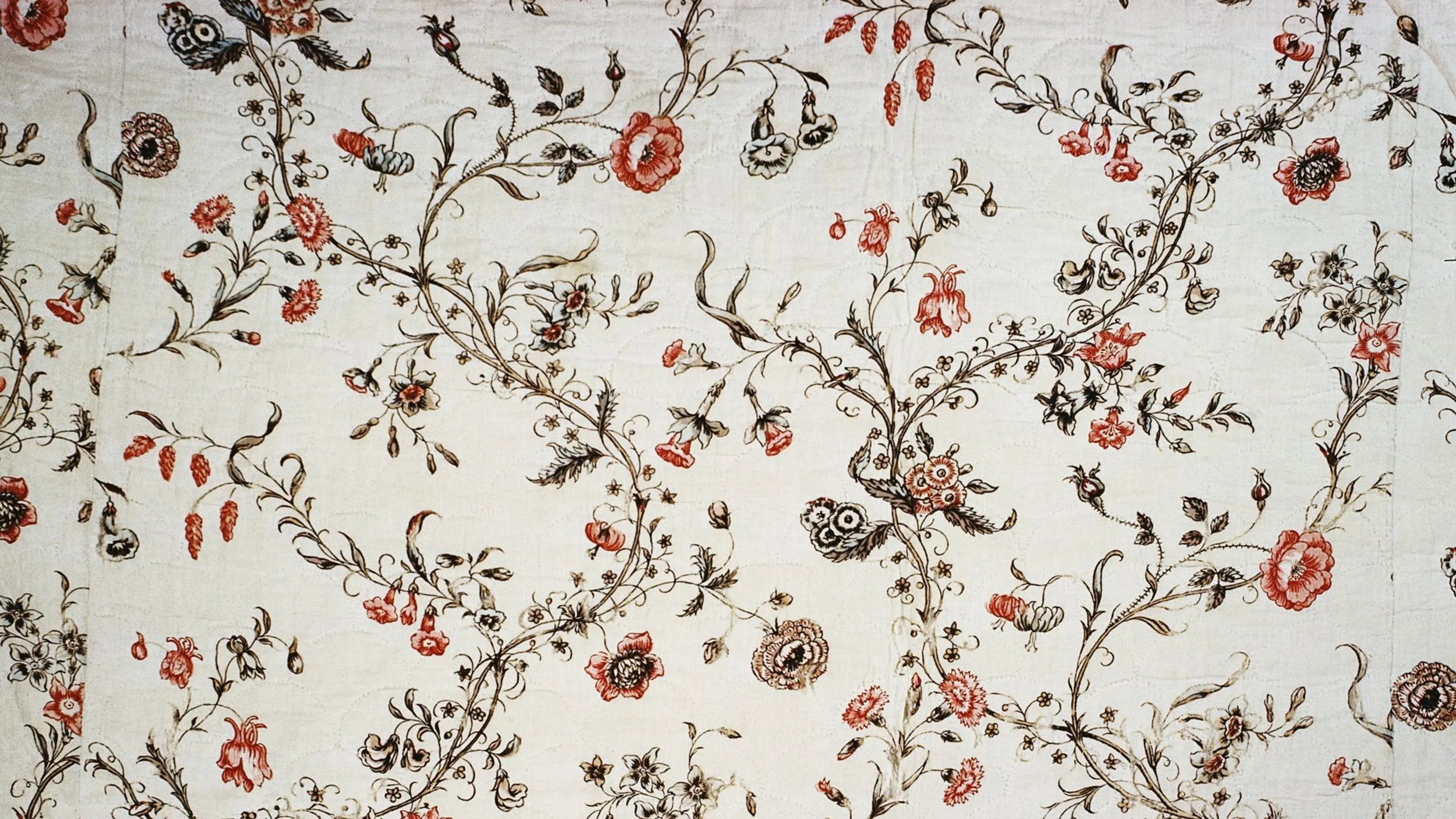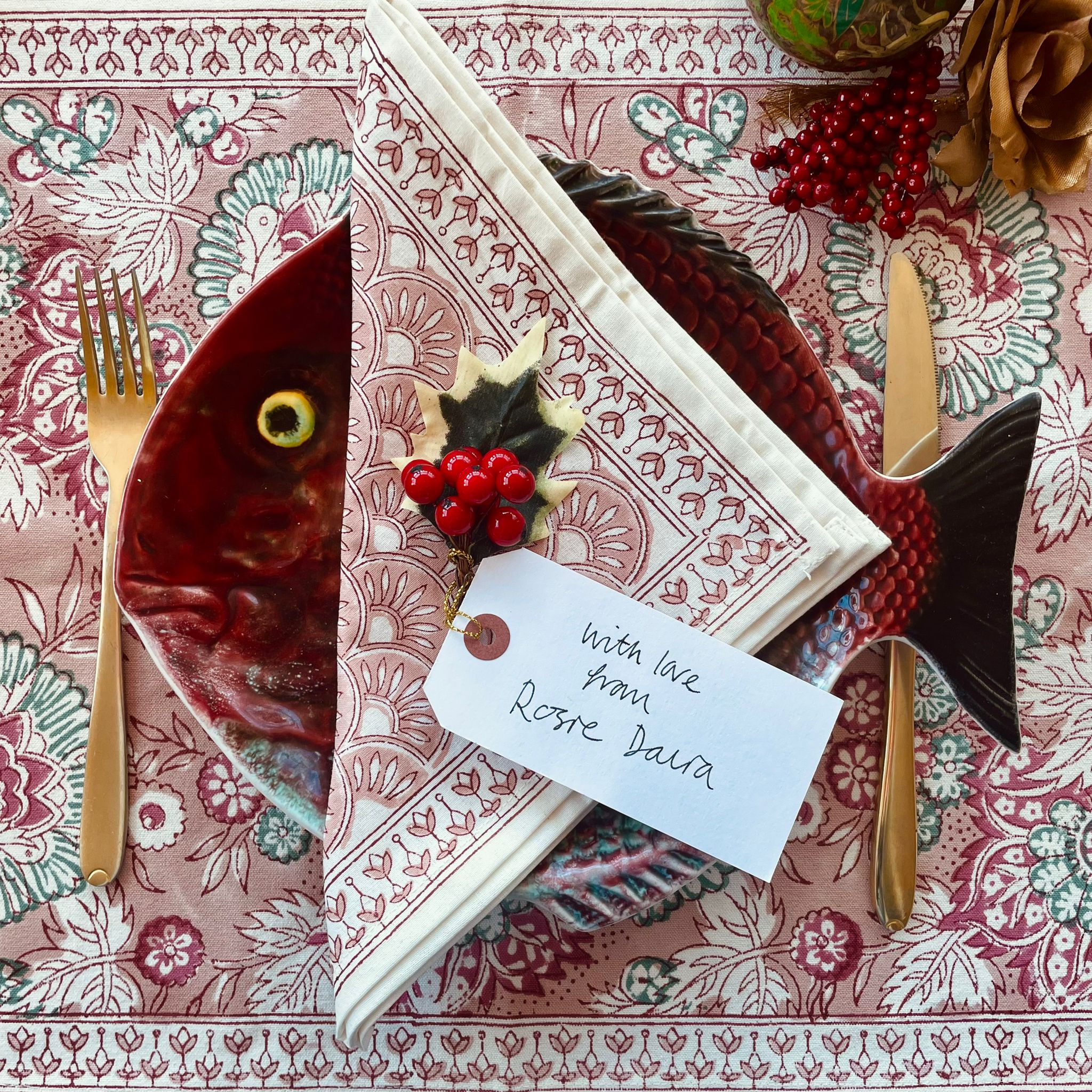
Indian Chintz and its Journey from Royal Palace to Living Room
The history of Indian textile design and production is a long and illustrious one. In the 16th and 17th centuries the immense wealth of India's Mughal rulers and their courts created a demand for incredibly elaborate and decadent products, from clothing and furnishings to ornate armour and decorative weapons. This demand and patronage spurred technological development in many fields which utilised great technical skill and exotic materials to demonstrate these rulers' god-like powers, their wealth, and their political influence.
The Origins of Chintz
Indian chintz patterns, also known as "chintz fabric", are a type of textile design that originated in India during the 17th century. These patterns are characterized by their bright colours, bold patterns, and floral motifs. During this time as Indian textile production skills and methods were refined and became more widely known, merchants realised that there were potentially very large markets outside of India for their wares, particularly in the Americas and Europe, which was at the time undergoing a fashion renaissance, largely led by the trends coming out of the French royal court at Versailles - perhaps Europe's first major fashion "influencer".
 Image: (left) Portrait of Madame de Pompadour, mistress of King Louis XV, shown wearing a chintz gown. Maurice Quentin de La Tour, circa 1755. (right) Detail of the bedchamber of Marie Antoinette at the palace of Versailles.
Image: (left) Portrait of Madame de Pompadour, mistress of King Louis XV, shown wearing a chintz gown. Maurice Quentin de La Tour, circa 1755. (right) Detail of the bedchamber of Marie Antoinette at the palace of Versailles.
A Fabric Fit for Royalty
The French aristocracy immediately fell in love with the floral patterns and saturated colours of Indian chintz fabric which were created by using local natural pigments such as cochineal and indigo that were still unavailable to Europeans at that time. The cotton dyeing techniques were also carefully guarded secrets, and as such bright and permanent colours had never been seen printed on fabrics before, they were a perfect fit for Versailles' extravagance and desire to show off such technological innovations to visiting dignitaries from other European courts.
By the late 17th century, the craze for Indian-made chintz fabrics had spread across Europe and filtered down the social strata, becoming so wildly popular with the public that both England and France were forced to ban the import of chintz in order to protect its own textile industries, which were up in arms about the damage this popular import or "chintz craze" was causing to their livelihoods. Lore has it (and somewhat believably) that Versailles chose to ignore thier own ban on chintz, and continued to import it and use it widely within the court for furnishings and garments.
Chintz's Mass Appeal Continues
During the 18th century, Indian chintz patterns continued to have a significant influence on European textile design and European manufacturers began to reproduce these patterns on their own textiles, often creating cheaper, lower-quality versions of the original Indian designs. The popularity of Indian chintz patterns in Europe led to a decline in the export of original Indian textiles, as European manufacturers were able to produce similar designs at a lower cost.
 Image: Le Divan en Chintz, 1908, Jaques-Emile Blanche
Image: Le Divan en Chintz, 1908, Jaques-Emile Blanche
By the early 19th century, the popularity of Indian chintz patterns had still not wained, and continued to influence global textile design, particularly in the United States. North American manufacturers began to produce their own versions of Indian chintz patterns for a new middle class consumer, often using newly developed techniques like copperplate printing to create much more intricate designs than were possible using the traditional Indian block printing methods. These new production lines also made it faster and cheaper to mass produce these fabrics, so that over time, the original Indian-made chintz all but disappeared in the West.
A Modern Design Staple
In recent times, Indian chintz patterns have seen a resurgence of interest in global design, particularly in the realm of interior design and fashion. These patterns are being used in a variety of ways, from home decor to clothing and accessories. They are considered an important symbol of Indian cultural heritage, and are often used to add a touch of exoticism and colour to contemporary designs.
 Image: Chintz patterns seen at New York Fashion Week © The New York Times
Image: Chintz patterns seen at New York Fashion Week © The New York Times
 Image: Chintz print cushions © Good Earth
Image: Chintz print cushions © Good Earth
Floral textile designs have been a constant decorative reference throughout history, but it was the ingenuity of Indian chintz that really made large-scale production of detailed and saturated floral patterns possible, and the trade between India and the West so massively valuable. Its impact on modern aesthetic sensibilities is unquestionable; chintz is back, and - not for the first time - causing a riot all over again.
Rosie Dalia will shortly be releasing a new range of chintz-inspired home textiles for Spring 2023. Watch this space! In the meantime take a look at some of our Editor's favourites below.


